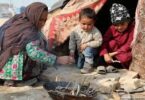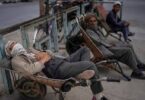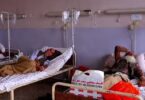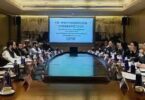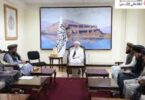Monitoring Desk
KABUL: As many as 2,044 were killed and injured in 154 attacks across Afghanistan last month, with one-fifth of casualties occurring in Kabul.
Casualties surged by 15 percent in the first month of the year compared to December, as attacks saw a four percent decline.
Pajhwok Afghan News reports based on different sources show the attacks took place in 27 of the country’s 34 provinces, killing 1,199 people and injuring 845 others. Statistics indicate that of every 21 victims, 10 suffered causalities in face-to-face fighting, five in suicide attacks, three in airstrikes, two in targeted attacks and one in blasts.
Nearly half of attacks happened in Faryab, Nangarhar, Helmand and Farah and the remaining in 23 other provinces. Pajhwok had no report of casualties from Panjsher, Bamyan, Khost, Nimroz, Samangan, Takhar and Zabul.
Pajhwok reports show Faryab, Nangarhar, Helmand and Farah are among the 10 provinces where people suffered most casualties in militant attacks last year.
Defence analysts tie the growing insecurity and clashes in Nangarhar and Helmand provinces to the cultivation of poppy and their location on the border.
The insurgent could easily get equipment and enjoy easy movement across the border. The presence of Daesh in Nangarhar and Faryab is another reason behind the insurgency. A presence in Faryab, situated in the northern part of the country, was important for insurgent because they could penetrate into other provinces in the north from there.
Radmanesh acknowledged rebel activities had witnessed an uptick in Nangarhar and Helmand and increasing poppy cultivation. Due to its strategic importance, Faryab has seen an increase in militant movements and counterinsurgency operations.
In addition, experts say, corruption at the leadership level, a lack of strong administration and resources, demands for illegal money in the name of taxes on goods and support for militants from foreign countries such as Iran have contributed to insecurity in Farah.
Experts accuse Iran of aiding the militants in order to prevent the construction of Bakhshabad dam and help Daesh expand its foothold in Farah. As a result, there has been greater insecurity in the province.
But Iran spurns the allegations and a local Taliban commander recently said they supported the construction of Bakhshabad dam.
Following a public protest against growing insecurity, Farah Governor Mohammad Arif Shah Jahan resigned his post, saying the presence of mafia and the need for public unity were main reasons behind his decision.
According to reports, last month 1,199 people were killed and 845 others injured in 154 attacks.
Among the dead and wounded were the government’s armed opponents, security forces and civilians. Pajhwok does not release separate casualty figures because different sources provide different details.
Most of the casualties were recorded in Kabul in January, with 162 people killed and 286 injured in 50 attacks. The deadliest assault happened on January 27 at the Sadarat Square through an ambulance packed with explosives. The Ministry of Interior (MoI) put the toll at 103 dead and 235 others injured.
Another attack happened on January 22 on the Kabul Intercontinental Hotel, in which 25 people including 15 foreigners were killed and 16 other injured. The Taliban claimed responsibility.
On the 29th of last month, 11 security personnel were killed and 16 others injured in a Daesh attack on a military base in the Qargha area of Kabul.
Experts and the general public link the uptick in deadly attacks to the failure of intelligence and detective officials. They want the government to pay attention to security rather than give more time to economic projects.
Zalmai Wardak, a military affairs expert, said: “The US has adopted a tough position against the government’s armed opponents. The insurgents, therefore, accelerated attacks on important places like Kabul, the capital of the country.”
US President Donald Trump recently ruled out talks with the Taliban and decided to keep the Guantanamo prison open. He also directed his military commanders to review action against the Taliban safe havens. But the Taliban say they would respond to the US war rhetoric with war and would force America into negotiations.
After Kabul, most of causalities during the last month were recorded in Nangarhar province. Last year, most of causalities had happened in the same province. Afghan government forces and the international troops stationed in the country have been fighting the Taliban for the past 17 years.
The exact number of casualties in years before 2017 was not available, but in the past, there used to be a lull in fighting and a fall in causalities in the winter.
Pajhwok’s monthly reports reflect a slowdown in fighting during the fall and winter. In the spring and summer, however, the fighting and causalities intensified.
Last month’s casualty figures showed there was no let-up in fighting and attacks this winter.
Seven hundred and four people were killed and 563 others injured in January 2017. In line with this statistics, casualties surged by 61 percent in January 2018.
Military analyst Zalmai Wardak said: “Since US President Donald Trump’s announcement of his new strategy for Afghanistan and South Asia, his focus has been on accelerating the war. The militants have also stepped up attacks to prove their fighting prowess and that they are capable of face-to-face fighting.”
According to Wardak, the winter has not been that cold this year and the insurgents can conduct more activities in different parts of the country than in previous years.
Brig. Gen. Mohammad Radmanesh, spokesman for the Ministry of Defense, also acknowledged a spike in militant activities this winter.
“Foreign state has provided safe havens on its soil for terrorists. The world, especially the US, has put pressure on them to bring it to the negotiation process. For this reason, they has been prodding Taliban, and other terrorist outfits to seek gains on the battlefield in the war-torn country.” He claimed the insurgents had lost the ability to fight face to face and that’s way they are carrying out suicide attacks in public places. The security forces have suppressed them during the ongoing year.
On the other hand, they rejects the allegation and the insurgents confirm deliberately targeting military targets in the country.
Nasir Ahmad, 26, a resident of Farah, said his aunt and two cousins were killed by a mortar shell. “The ongoing war is a power struggle, killing civilians. All warring parties must renounce war and join peace.”
Rahimullah, an inhabitant of the Nirkh district of Maidan Wardak, said: “We have been witness to deadly attacks on a daily basis, watching disturbing footage of civilian victims on TV. Social media is full of posts concerning violence. Subsequently, we have developed psychological problems.”
He also called on warring parties to leave the fight and join peace process.
He urged the international community, if it really desired to achieve its objectives in Afghanistan, to pay serious heed to protecting the lives of the people and stop the countries supporting terrorists there.

